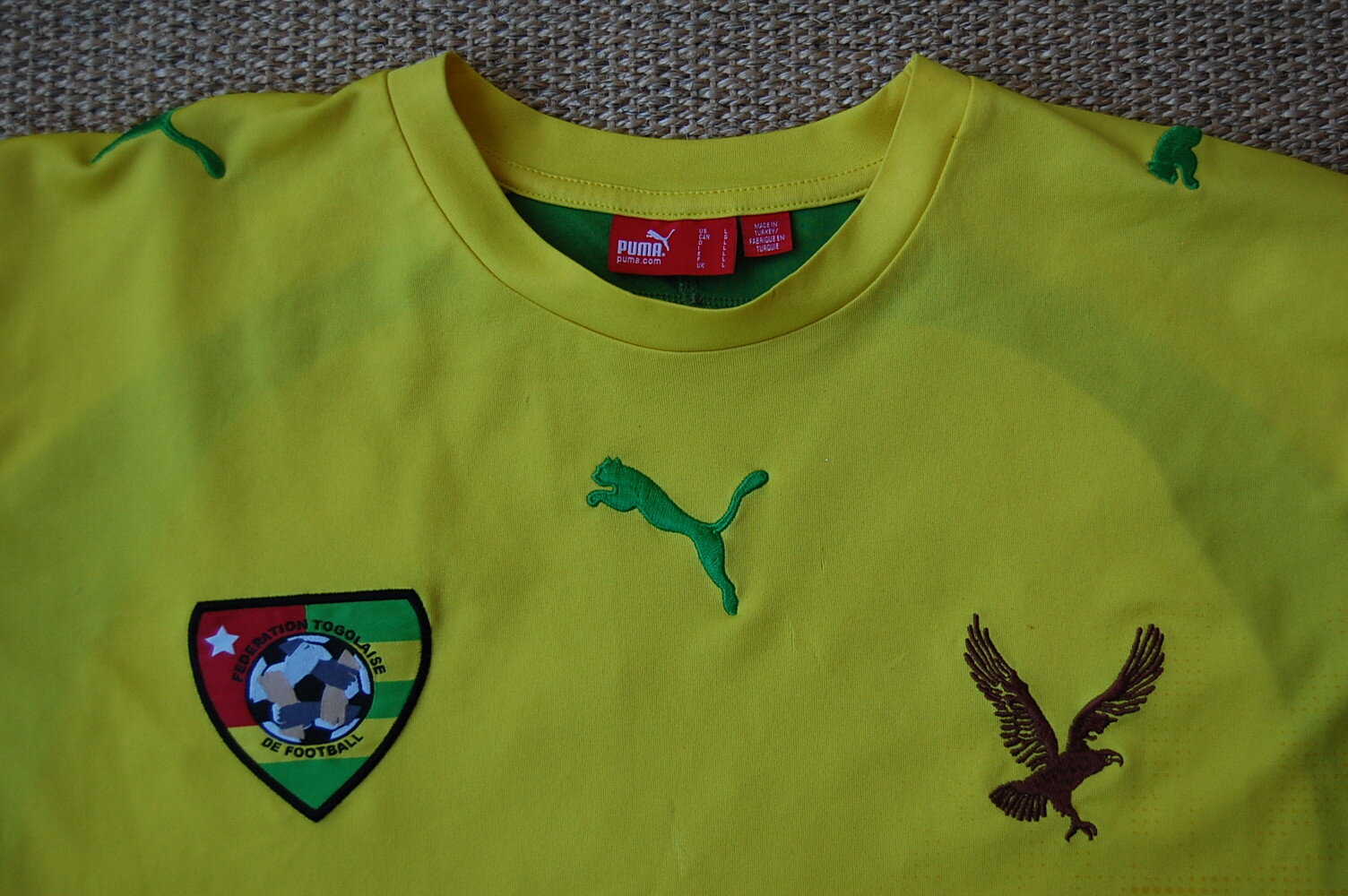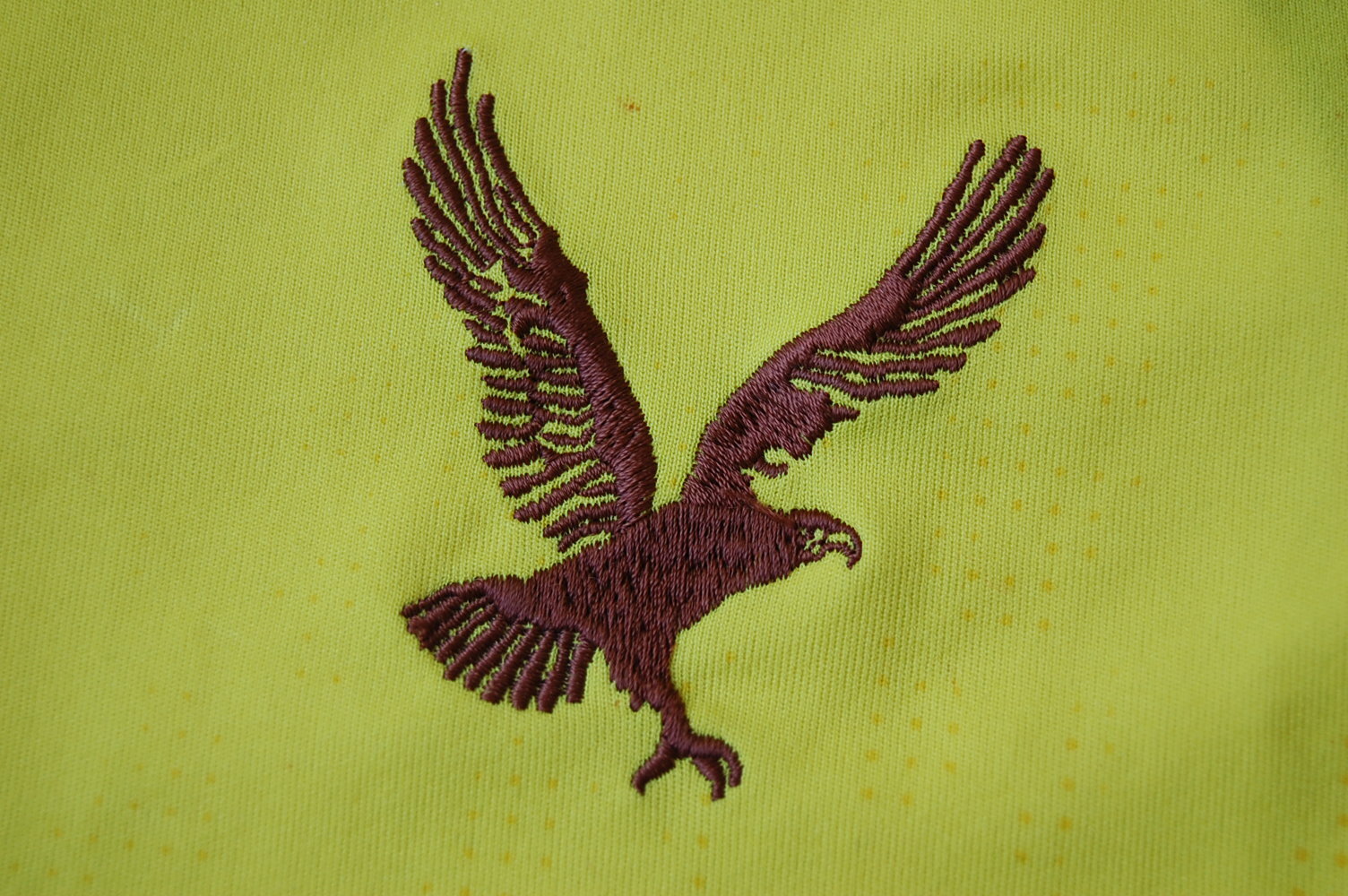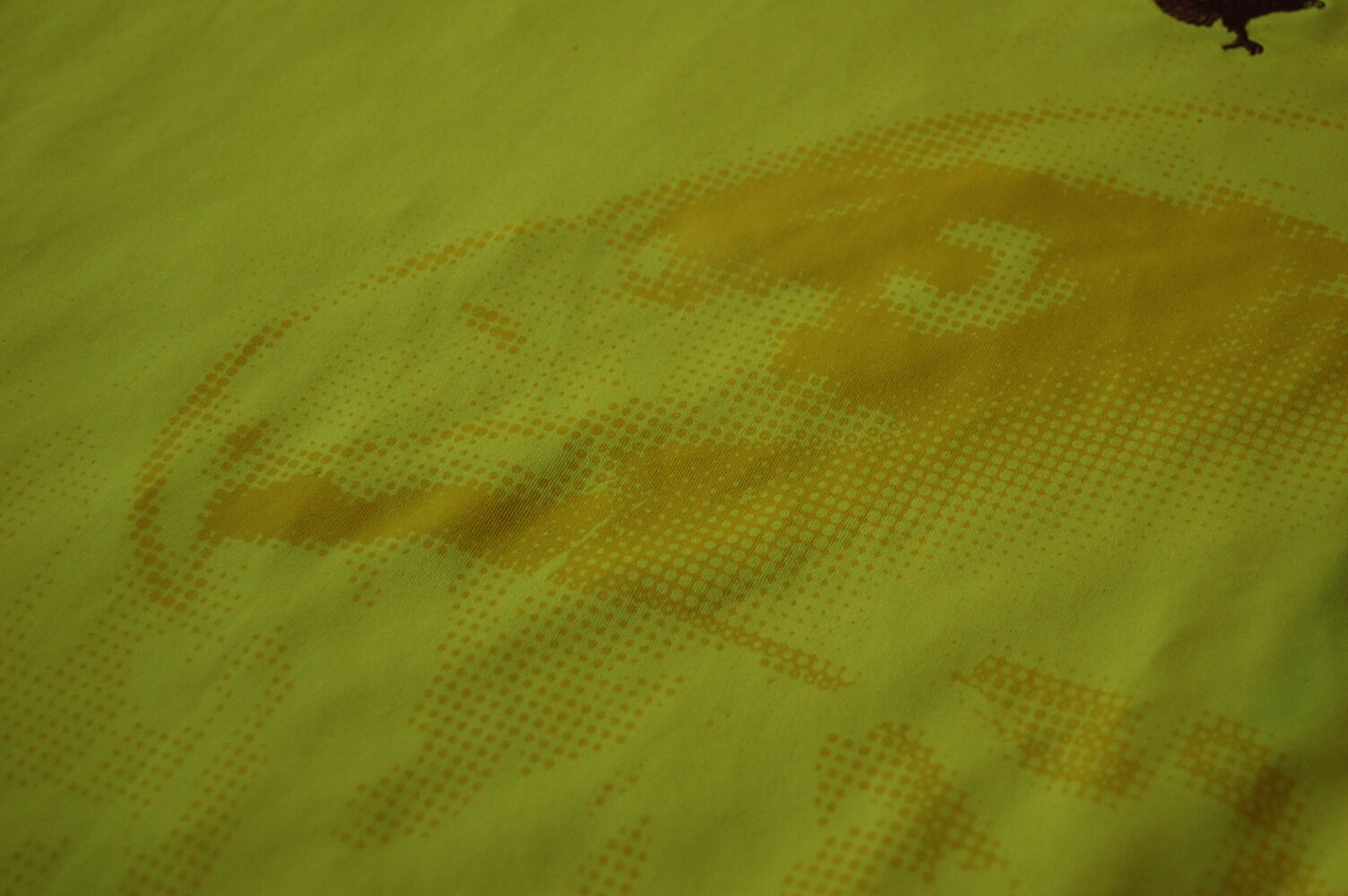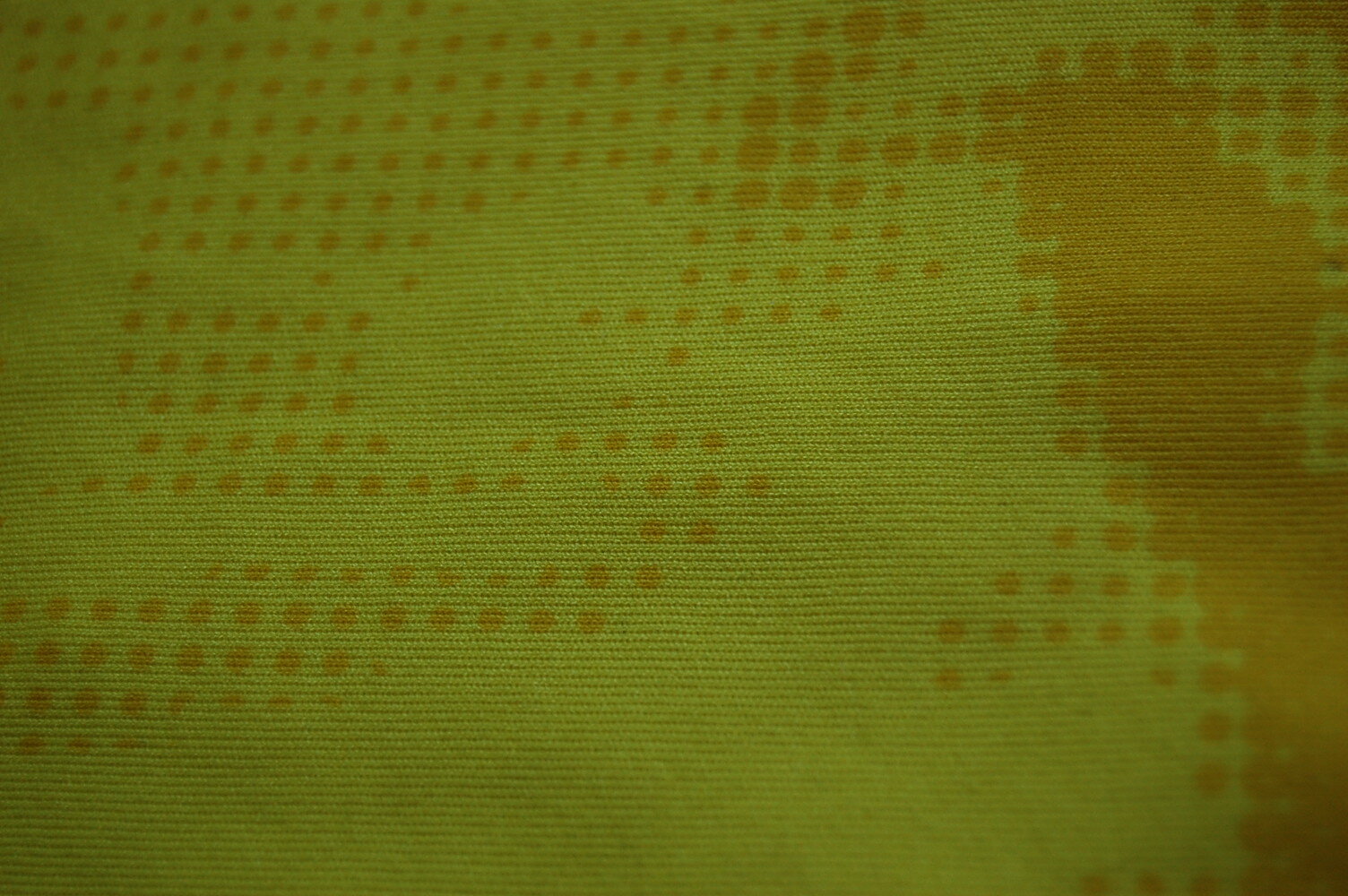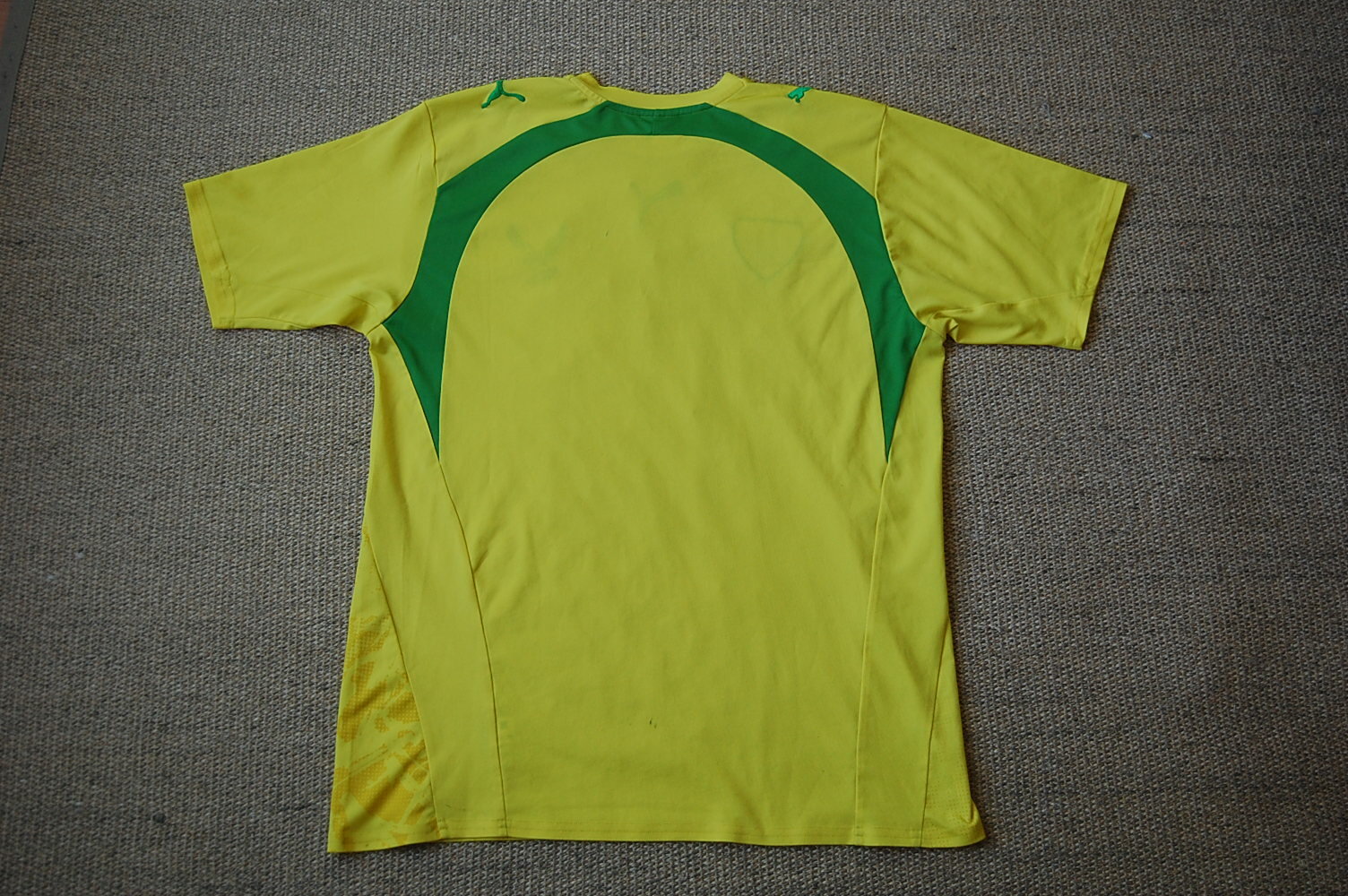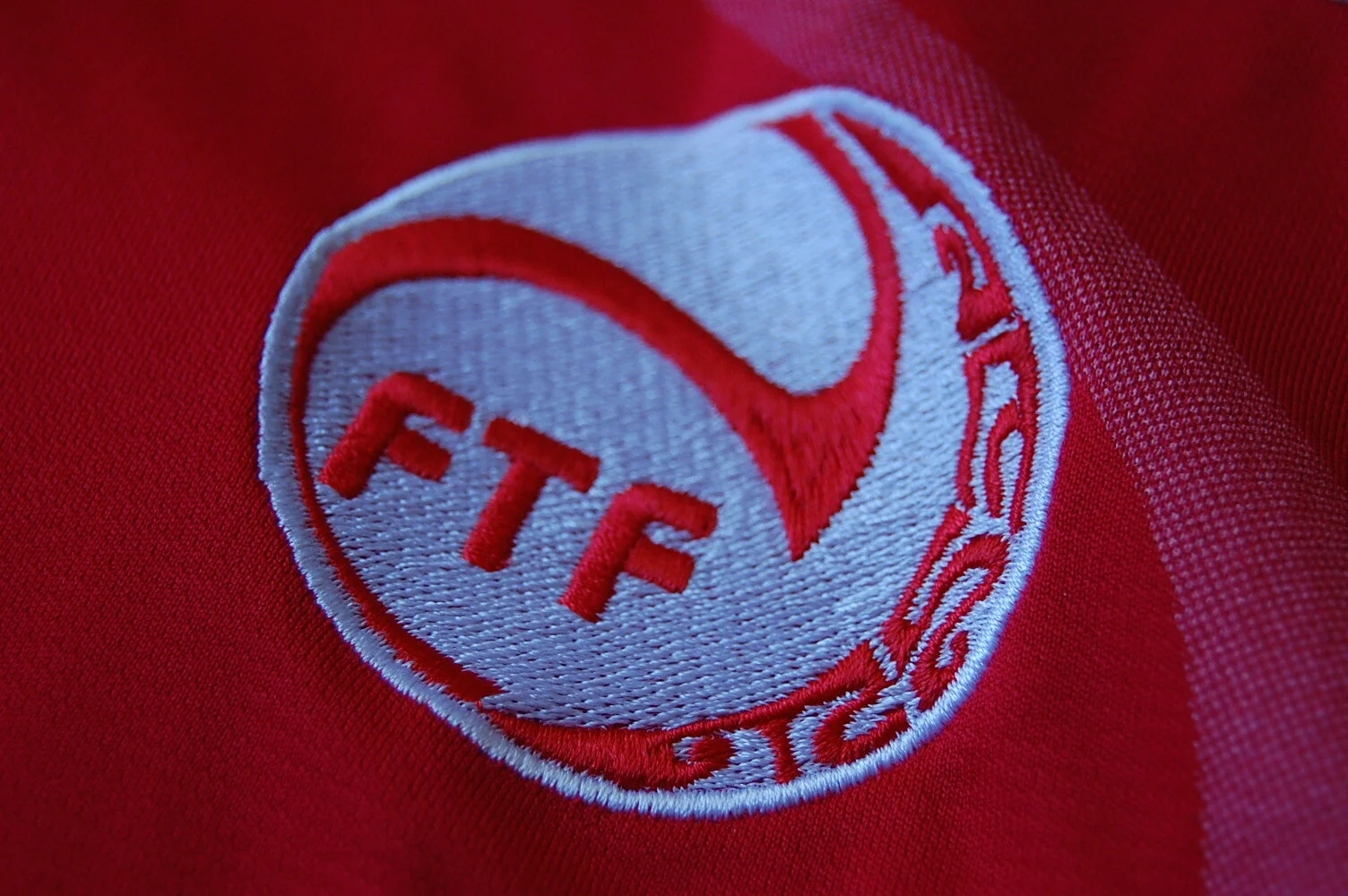Togo
Home; 2006/07
This Togo shirt is from a Puma collection focused around the 2006 Word Cup in Germany, which was worn by most of their major international teams at the time. This is a replica version, so features traditional cut-and-sew techniques. The player versions were actually a very different material, had a different cut and had heat-pressed seams, but I will write about that in another post as I do have a player-spec Tunisia shirt of this template. It was around this period where Puma made some low quality replicas of their shirts, especially it would seem for African countries. This was perhaps a way of offering replicas at a lower cost in developing economies.
Like with the other nations in this collection, Puma used a sublimated graphic of a national icon partially hidden by what appears to be tufts of grass on the front of the shirt. In this case, the icon is a sparrowhawk (not an eagle, which I first assumed it was), which has also been used as a crest on shirts alongside that of the Togo FA for many years and also serves as the nickname of the national team.
It was in this shirt that Togo made their World Cup debut in 2006. They were unable to pick up any points, but made plenty of headlines for the wrong reasons. They took the lead in their opening game against South Korea before having a man sent-off and eventually losing 2-1. This was followed a threat to go on strike over a failure by the Togo Football Federation to pay players agreed fees. The players stated that they would not fulfil their next fixture against Switzerland without payment, and it took FIFA getting involved directly before the deadlock was broken. FIFA would later fine the federation for their actions. With the chaos of the strike only two days before, the Togolese lost 2-0 to Switzerland and lost by the same margin to France in their final game. The shirt remained in use after the World Cup and through the African Cup of Nations qualifying in 2006 and 2007. Togo finished third in a four team group in that qualifying and failed to progress to the tournament itself.
Tragedy would strike during that campaign, when in 2007, on a return trip from a game in Sierra Leone, a helicopter carrying Togo fans back home crashed killing 22 on board. This was followed in 2010 by an ambush which would see three people on their team bus (the assistant coach, a journalist and the bus driver) killed while travelling as part of the African Cup of Nations in Angola. Goalkeeper Kodjovi Obilale was wounded by a bullet and his injuries would force him to retire. Obilale’s recovery is reported to have been funded by FIFA, the French Football Federation and the Togo government, but the player said he received no help from the Togo Football Federation or CAF. He also praised his teammate Emmanuel Adebayor’s for his help and regular contact as he recovered.
Later in 2010, a far less serious but still bizarre situation also played itself out involving a ‘Togo’ team. It is now known that a former coach was involved in setting up a friendly in Bahrain between the host nation and what the Bahrain FA thought was the Togo national team. However, the documents purporting to be from the Togolese federation were forgeries and the team had nothing to do with the Sparrowhawks. One of the first thing a kit nerd will notice, is that the fake Togo national team played in Adidas baselayers rather than actual shirts. They also conspicuously used the Togo flag on the front rather than the offical Togolese crests. It remains a bit of a mystery as to who exactly did play for the fake Togo that night. Some reports from the time say that there were two team-sheets, the latter of which appeared just moments before kick off with a raft of new names. One can only assume that the idea was to get the Bahrain FA to pay a match fee which would then be pocketed by those pretending to be from the Togolese FF. Surprised by the lack of fitness of the opposition, the Bahrain coach on the night, Josef Hickersberger, described the game as “boring” and a “wasted opportunity”.
